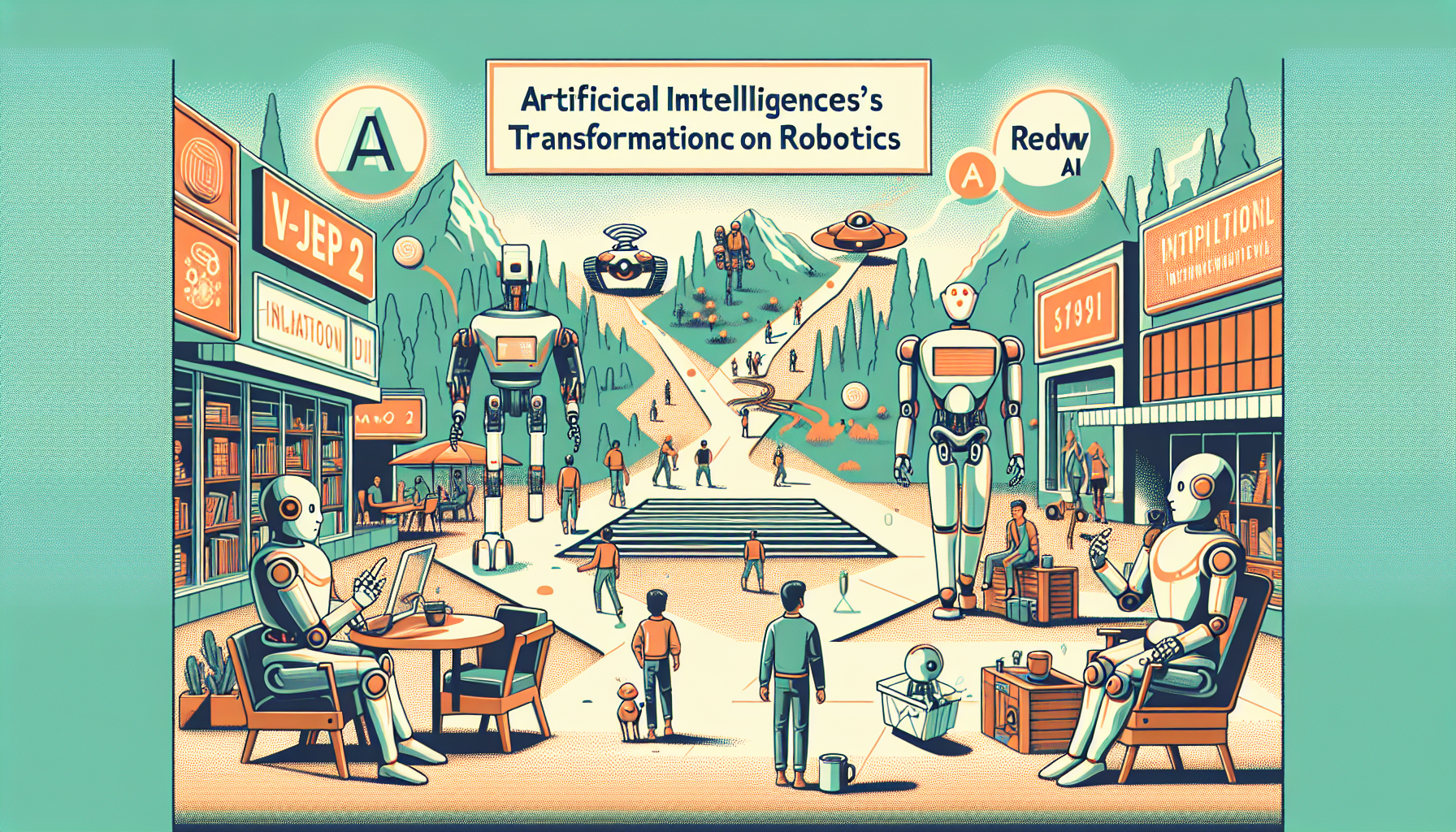Artificial intelligence is quietly transforming the way robots move and think in our world. Two remarkable developments—Meta’s V-JEPA 2 and 1X Technologies’ Redwood AI—are charting a new course for the future of robotics, one where machines not only follow instructions, but also learn to understand and act in the physical world with intuition and independence.
Meta’s V-JEPA 2: Teaching Robots to See, Plan, and Act
Meta has introduced a powerful new “world model” called V-JEPA 2. This AI system helps robots and digital agents see, predict, and make decisions about what happens around them. With a vast dataset of over one million hours of video and images, V-JEPA 2 learns from the world as it is, not just from pre-set labels or hand-crafted instructions.
The model’s training unfolds in two phases:
- Self-Supervised Learning: V-JEPA 2 watches and studies huge amounts of video, absorbing patterns about how objects and people move and interact.
- Action-Conditioned Learning: It then practices with real robot control data—about 62 hours’ worth—learning to predict how its actions will affect the world around it.
With this training, V-JEPA 2 can do practical things like picking up objects and moving them, or following a series of steps to complete a complicated task. It chooses what to do next by imagining several possible actions and seeing (in its “mind’s eye”) which will lead to the desired result.
Meta’s model is not only intelligent but also fast and adaptable. The company says V-JEPA 2 is about thirty times quicker than its main competitors and can tackle new environments without having seen them before. This means robots powered by V-JEPA 2 could figure out household chores—like cleaning or sorting—without relying on endless human guidance or lengthy trial and error.
1X Technologies’ Redwood AI: Humanoid Help for Real-World Tasks
Meanwhile, 1X Technologies has created Redwood AI to enhance its humanoid robot, NEO. Redwood AI sharpens NEO’s ability to handle daily jobs that require careful perception and decision-making. Whether it’s doing laundry or navigating a house, NEO uses Redwood AI to become more self-sufficient, acting not just as a machine but as a helpful assistant.
By focusing on real-life tasks, Redwood AI marks a significant step toward robots that can share our living spaces in a meaningful way, taking on roles that reduce our workload and improve our routines.
The Broader Impact: Robots that Learn and Adapt
These advances together signal a turning point for robotics. By learning directly from the world, rather than waiting for perfectly labeled instructions, robots can become far more adaptable and capable. This has powerful implications:
- Less Manual Programming: Engineers won’t need to program every detail by hand, saving time and making robots more accessible for everyday use.
- Greater Flexibility: Robots can adjust to new places or unfamiliar tasks, making them helpful in a wider range of situations.
- Faster Progress: As these systems become smarter, robots could soon handle chores, assist in navigation, and take on other complex physical responsibilities with little set-up.
Meta foresees a world in which models like V-JEPA 2 push the boundaries not only of robots, but also of smart assistants and wearable devices that work seamlessly alongside humans, thinking and planning almost as naturally as we do.
A Glimpse of What’s Next
The emergence of V-JEPA 2 and Redwood AI reflects the dawn of a new era. Robots are learning to perceive their surroundings, reason about what comes next, and act with greater freedom. They are no longer limited by rigid instructions—they are quietly evolving into partners, ready to take on real challenges in our homes and communities.
These breakthroughs stand as a testament to the steady progress of artificial intelligence, guiding us toward a future where helpful, adaptive robots are part of daily life.

Leave a Reply